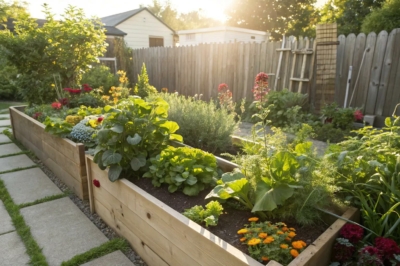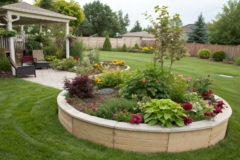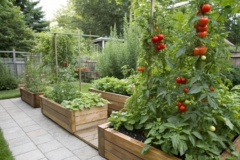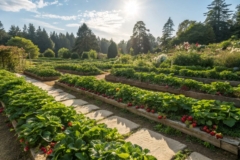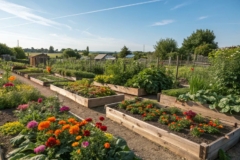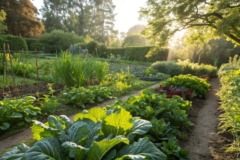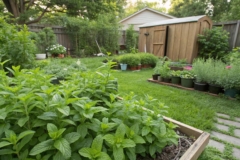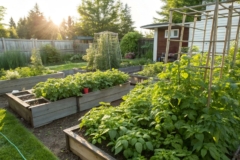1. Zinnia Zest
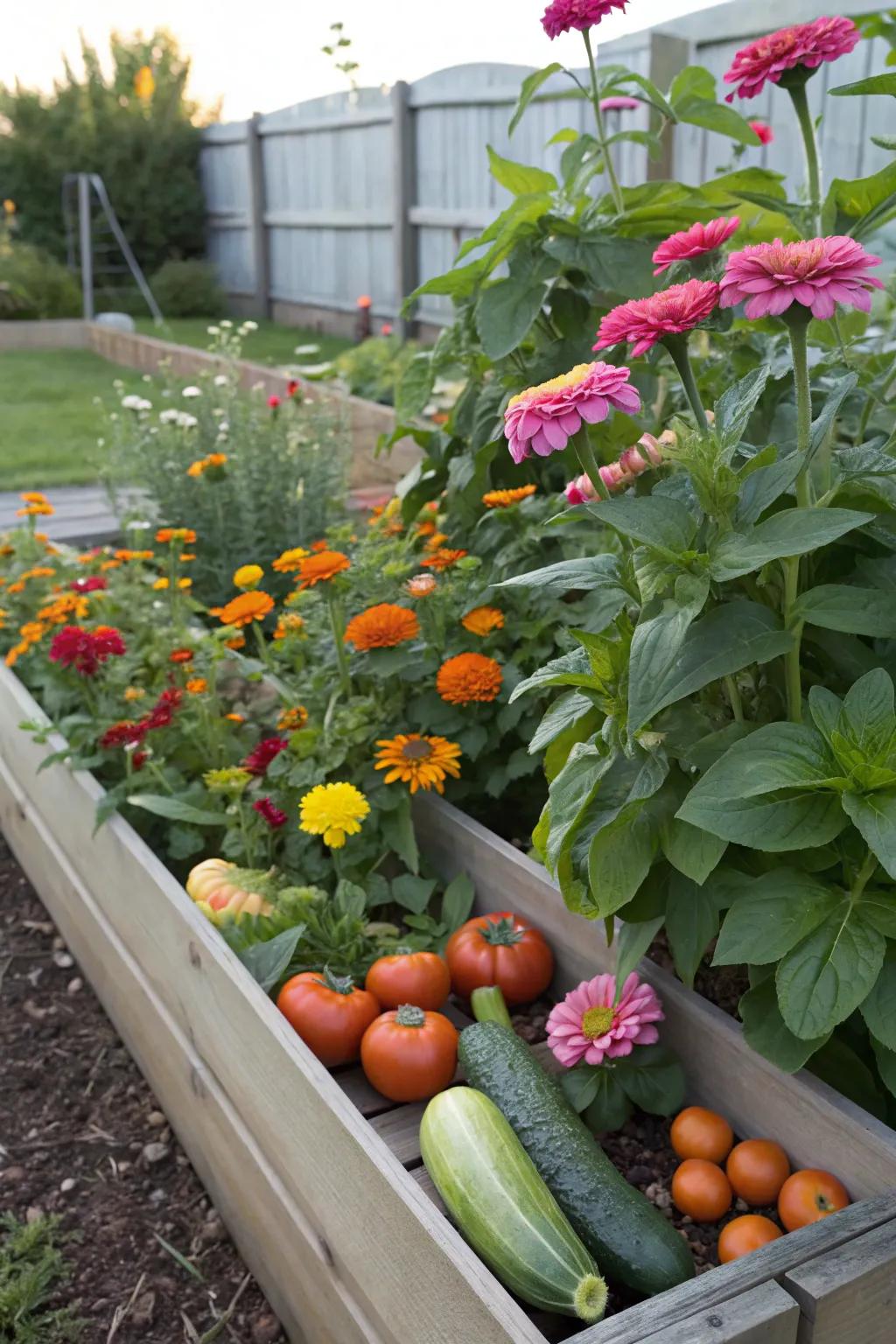
Zinnias bring a burst of color and attract pollinators, enhancing the beauty and productivity of your raised bed. Their bright blooms are a joy to behold.
These products might be useful:
- Zinnia Flower Seed Pack: Plant vibrant zinnias to attract pollinators and add stunning color to your garden today.
- Raised Garden Bed Kit: Elevate your gardening with a durable raised bed kit, perfect for showcasing beautiful zinnias.
- Organic Fertilizer for Flowering Plants: Boost zinnia growth with this organic fertilizer, ensuring vibrant blooms all season long.
2. Cucumber Climb
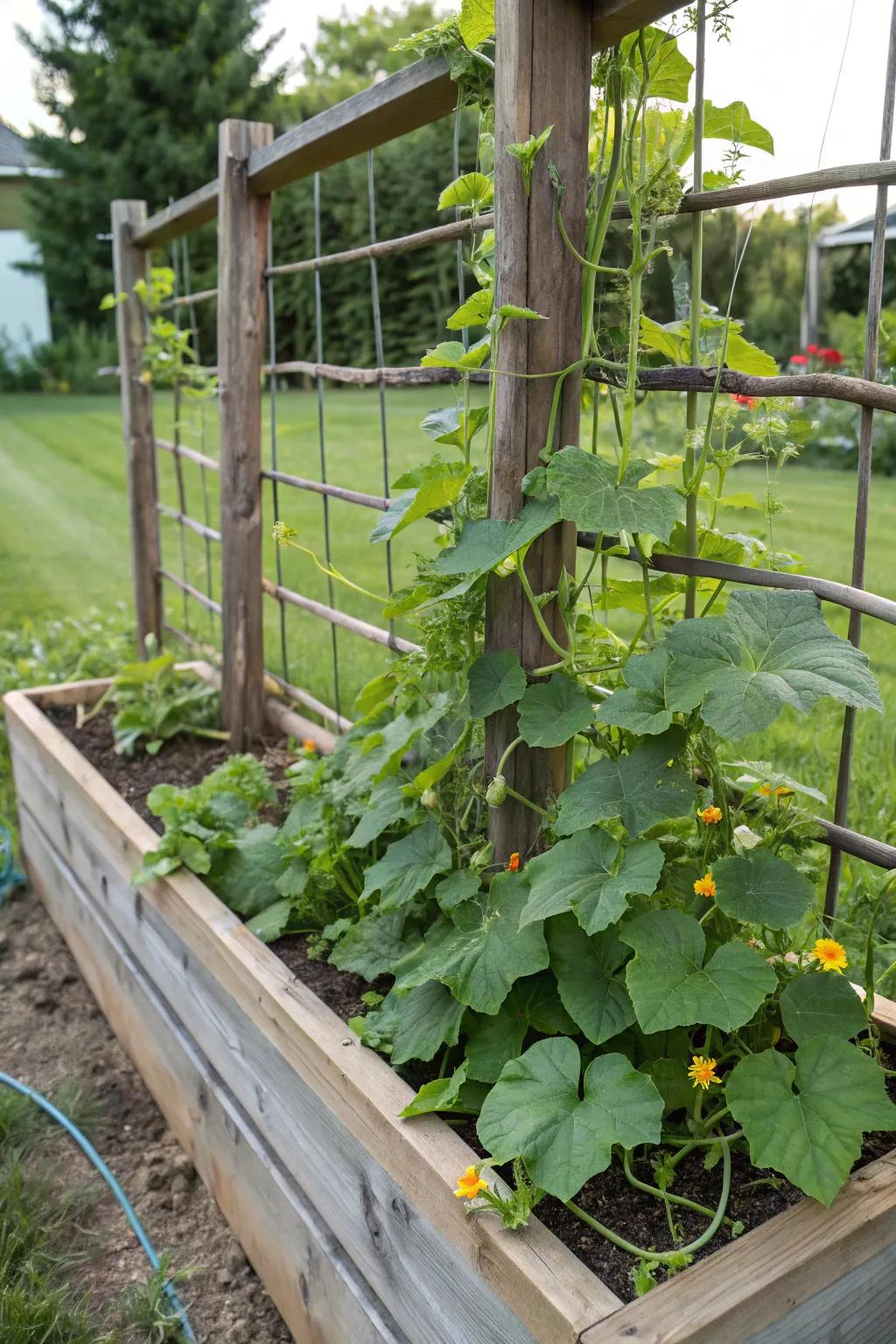
Cucumbers thrive in raised beds, especially when given a trellis to climb. This setup keeps the fruits off the ground and makes harvesting a breeze.
Some handy options:
- Garden Trellis: Enhance your cucumber growth with this sturdy trellis. Perfect for maximizing vertical space.
- Raised Garden Bed Kit: Start your cucumber garden with ease using a durable raised bed kit. Perfect for any gardener.
- Organic Potting Soil: Boost your plants’ health with rich, organic potting soil. Ideal for raised bed gardening.
3. Spinach Success
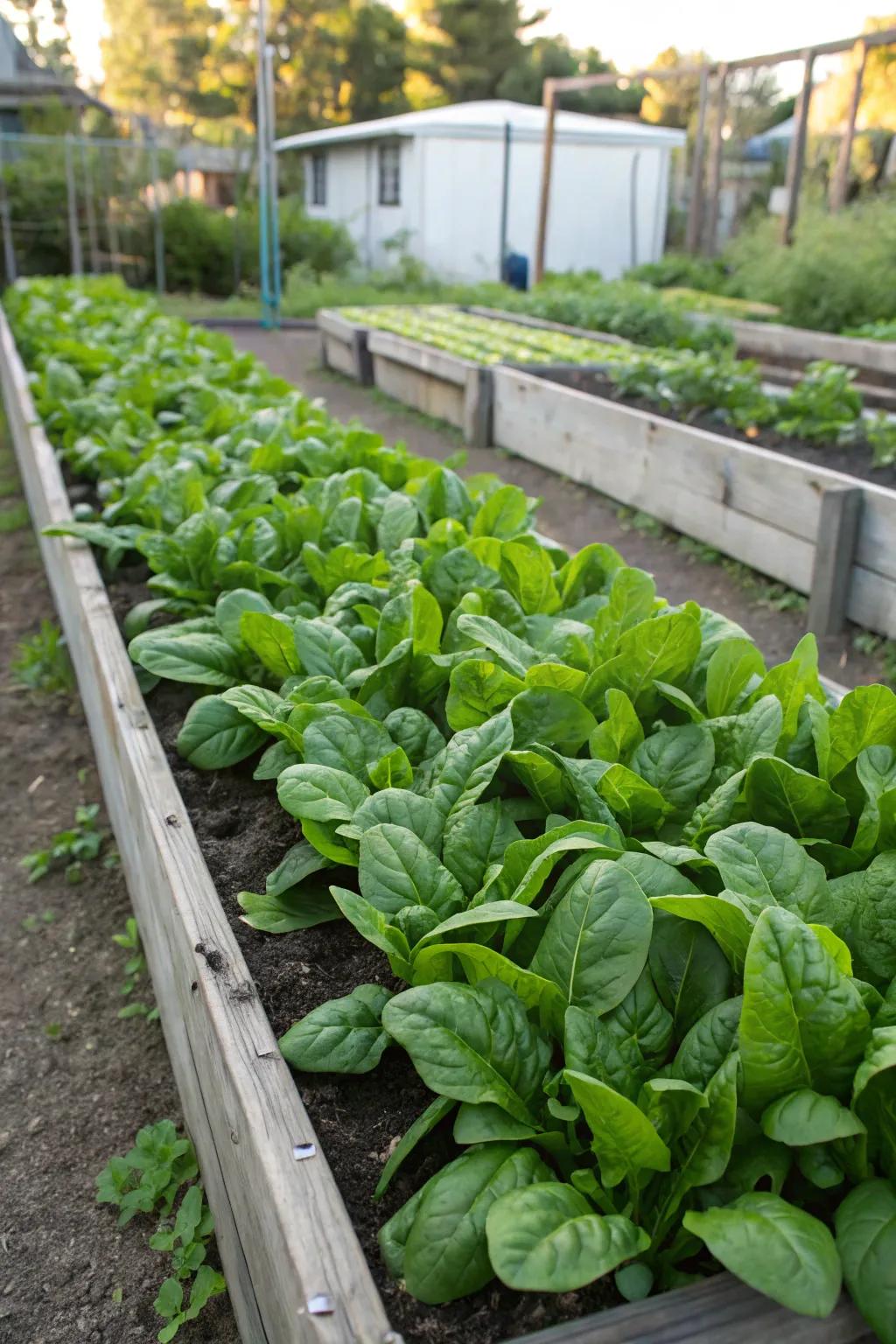
Spinach thrives in the cooler months of spring and fall, making it a versatile crop for raised beds. I love its nutritional punch and ease of growth.
You might give these a try:
- Raised Garden Bed Kit: Elevate your gardening game with this easy-to-assemble raised garden bed kit.
- Organic Spinach Seeds: Start your spinach garden right with high-quality organic seeds for bountiful harvests.
- Gardening Soil Mix: Boost your plants’ growth with nutrient-rich gardening soil, perfect for raised beds.
4. Kale Kingdom
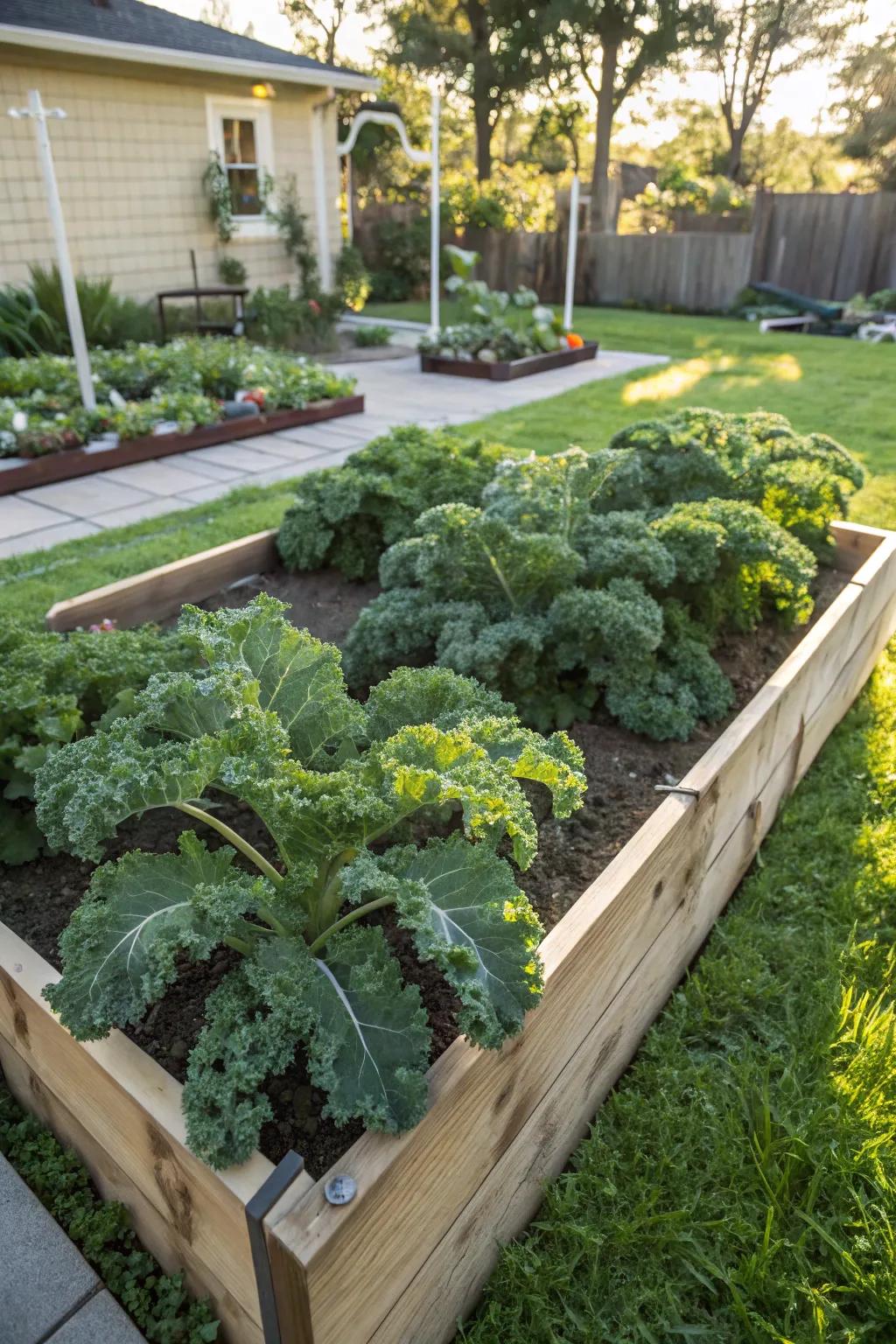
Kale is a hardy green that flourishes in raised beds, offering a continuous harvest. Its nutrient-packed leaves are a staple in my garden.
Try these:
- Raised Garden Bed Kit: Cultivate your own kale garden with this durable and easy-to-assemble raised bed kit.
- Organic Kale Seeds: Start your kale kingdom with high-quality organic seeds for a bountiful, nutrient-rich harvest.
- Garden Soil for Vegetables: Nourish your kale plants with fertile, nutrient-rich soil designed for optimal vegetable growth.
5. Nasturtium Nook
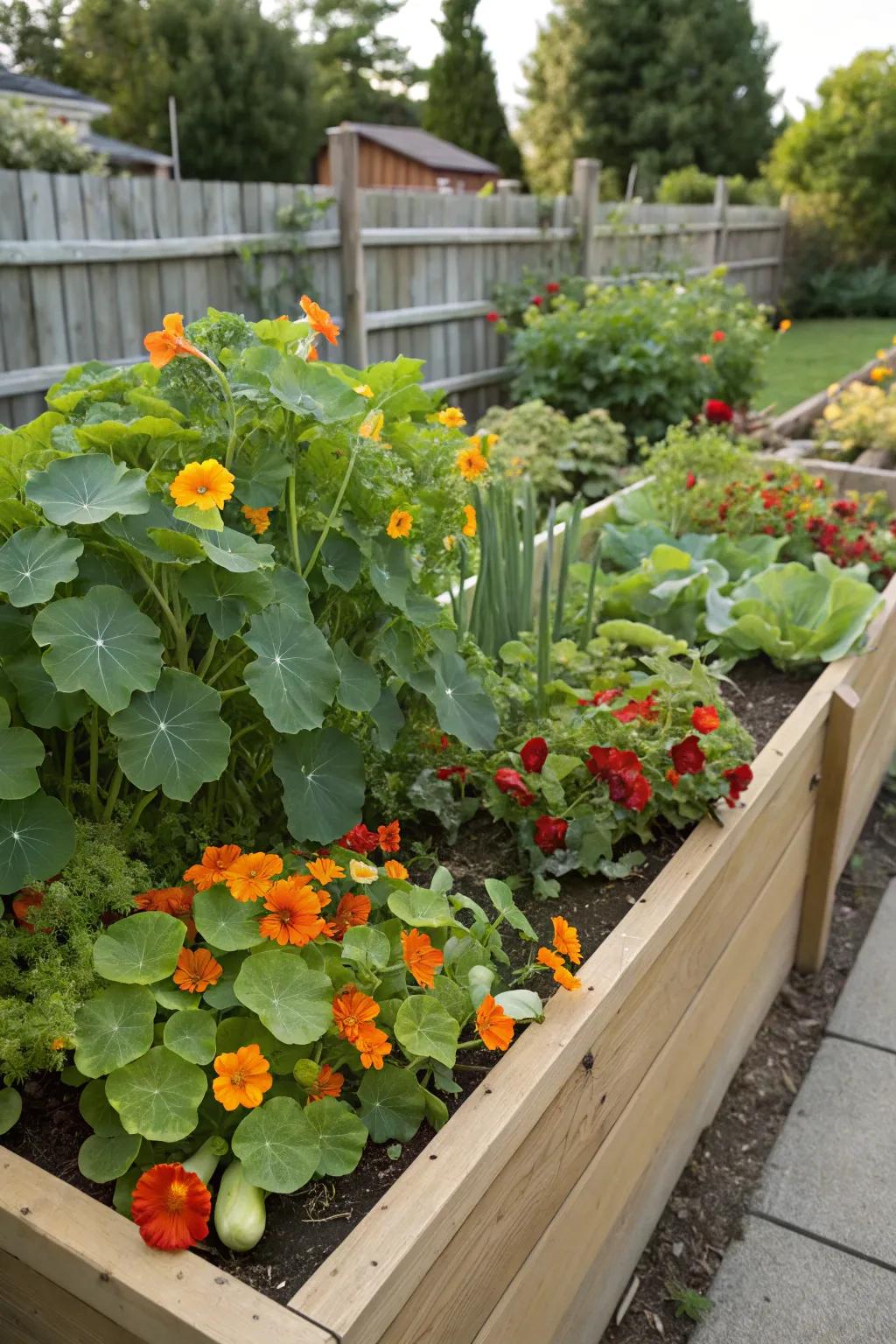
Nasturtiums not only bring vibrant color but also deter pests, making them a perfect companion for your veggies. Their peppery leaves and flowers are also edible.
These products might help:
- Nasturtium Seed Pack: Grow vibrant nasturtiums in your garden and enjoy their colors and pest-deterring properties.
- Raised Garden Bed Kit: Elevate your gardening with a sturdy raised bed kit suitable for vibrant flowers and veggies.
- Organic Fertilizer for Flowers: Boost your nasturtiums and veggies with natural nutrients to enhance growth and vibrancy.
6. Carrot Haven
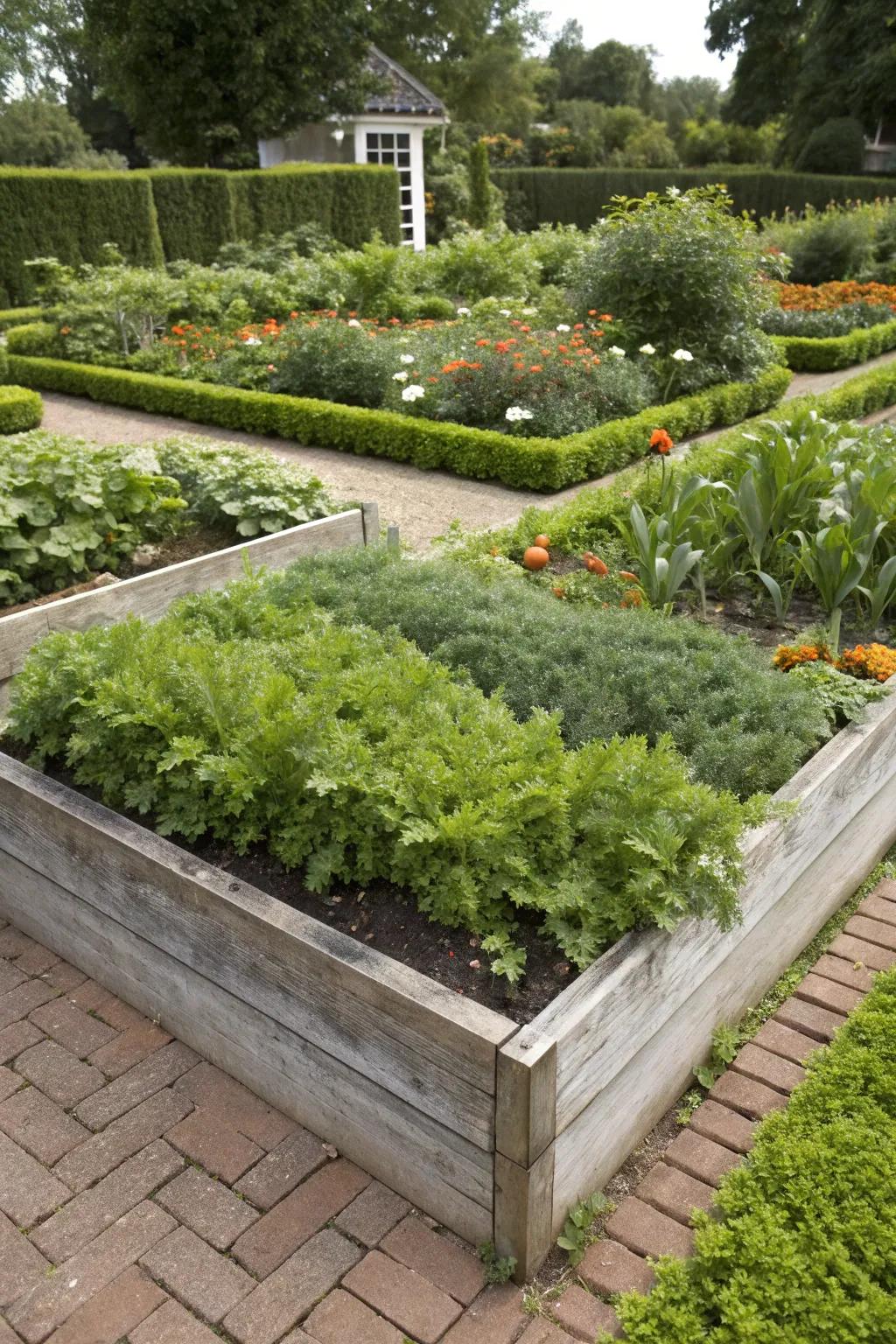
Raised beds are perfect for carrots, providing the deep, loose soil they need to grow straight and strong. I always enjoy pulling up these hidden treasures during harvest time.
Some ideas to consider:
- Raised Garden Bed Kits: Enhance your garden’s growth with easy-to-assemble raised bed kits, perfect for carrots.
- Carrot Seeds Variety Pack: Plant diverse carrot varieties for a vibrant harvest in your raised garden bed.
- Garden Soil Mix for Vegetables: Ensure optimal carrot growth with rich, loose garden soil designed for vegetable beds.
7. Strawberry Sensation
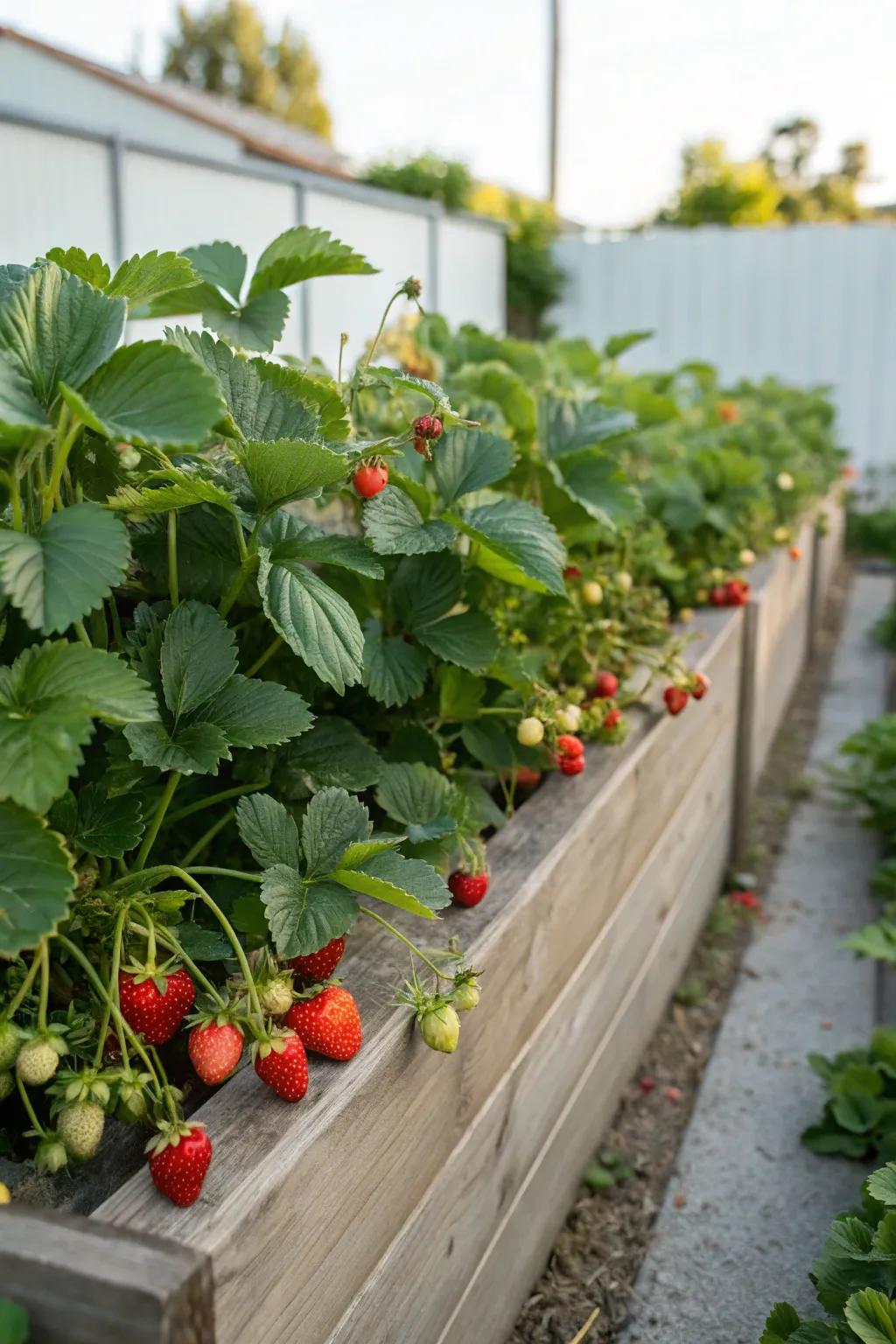
Strawberries make a delightful addition to raised beds, where they benefit from the warm, loose soil. I love picking them fresh for a sweet garden treat.
A few helpful options:
- Raised Garden Bed Kit: Set up your ideal strawberry bed with this easy-to-assemble raised garden bed kit.
- Organic Strawberry Fertilizer: Boost your strawberry yield with this organic fertilizer, crafted for vibrant, healthy growth.
- Bird Netting for Gardens: Protect your strawberries from birds with this durable and easy-to-install garden netting.
8. Okra Oasis
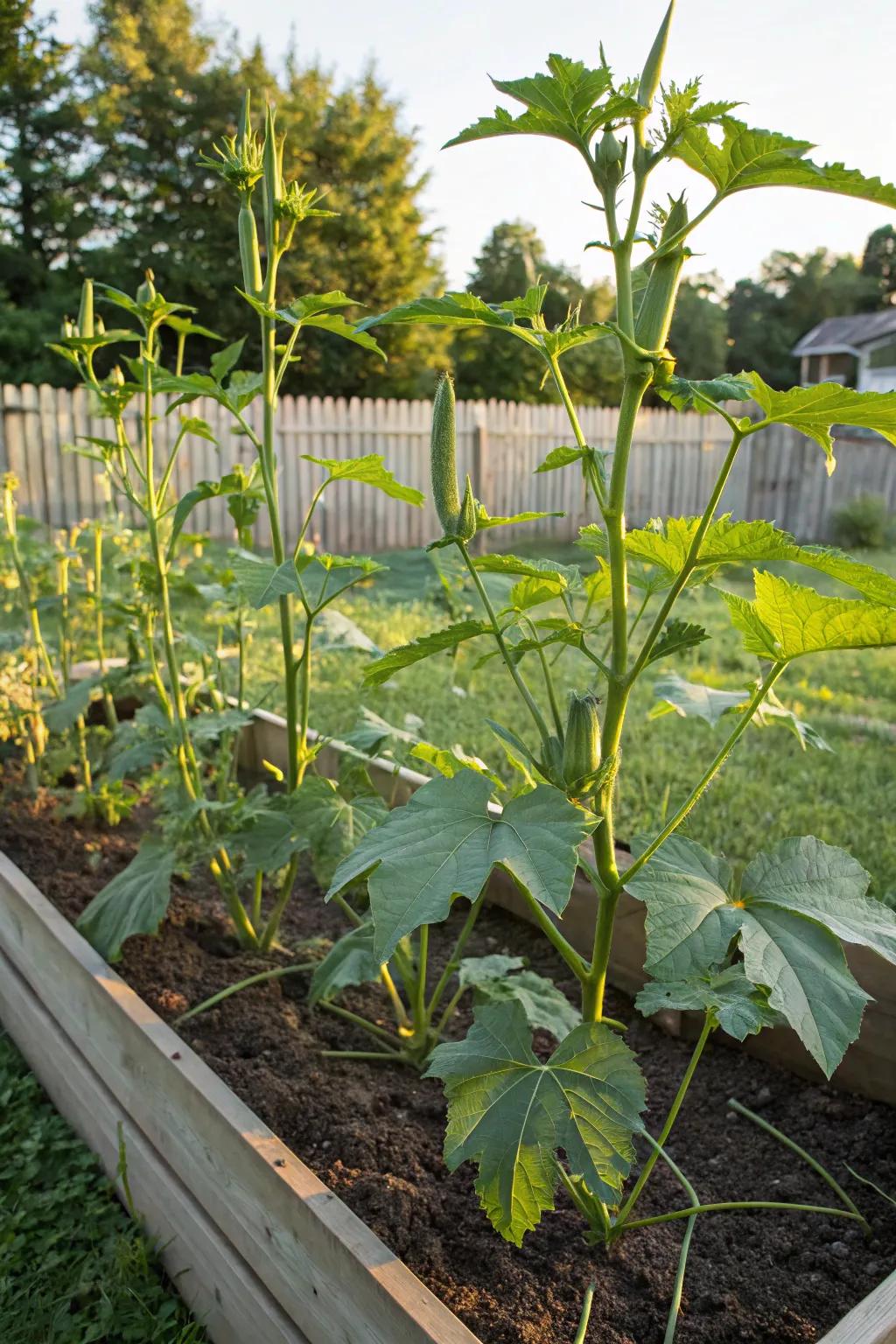
Okra loves the heat, and a raised bed provides the perfect environment for its growth. I love the unique texture it adds to my summer dishes.
Give these a look:
- Raised Garden Bed Kit: Elevate your gardening with this durable raised bed, ideal for thriving okra plants.
- Organic Fertilizer for Vegetables: Boost your okra harvest with nutrient-rich fertilizer designed for vibrant vegetable growth.
- Okra Plant Seeds: Start your okra journey with high-quality seeds perfect for home gardening enthusiasts.
9. Bursting with Basil
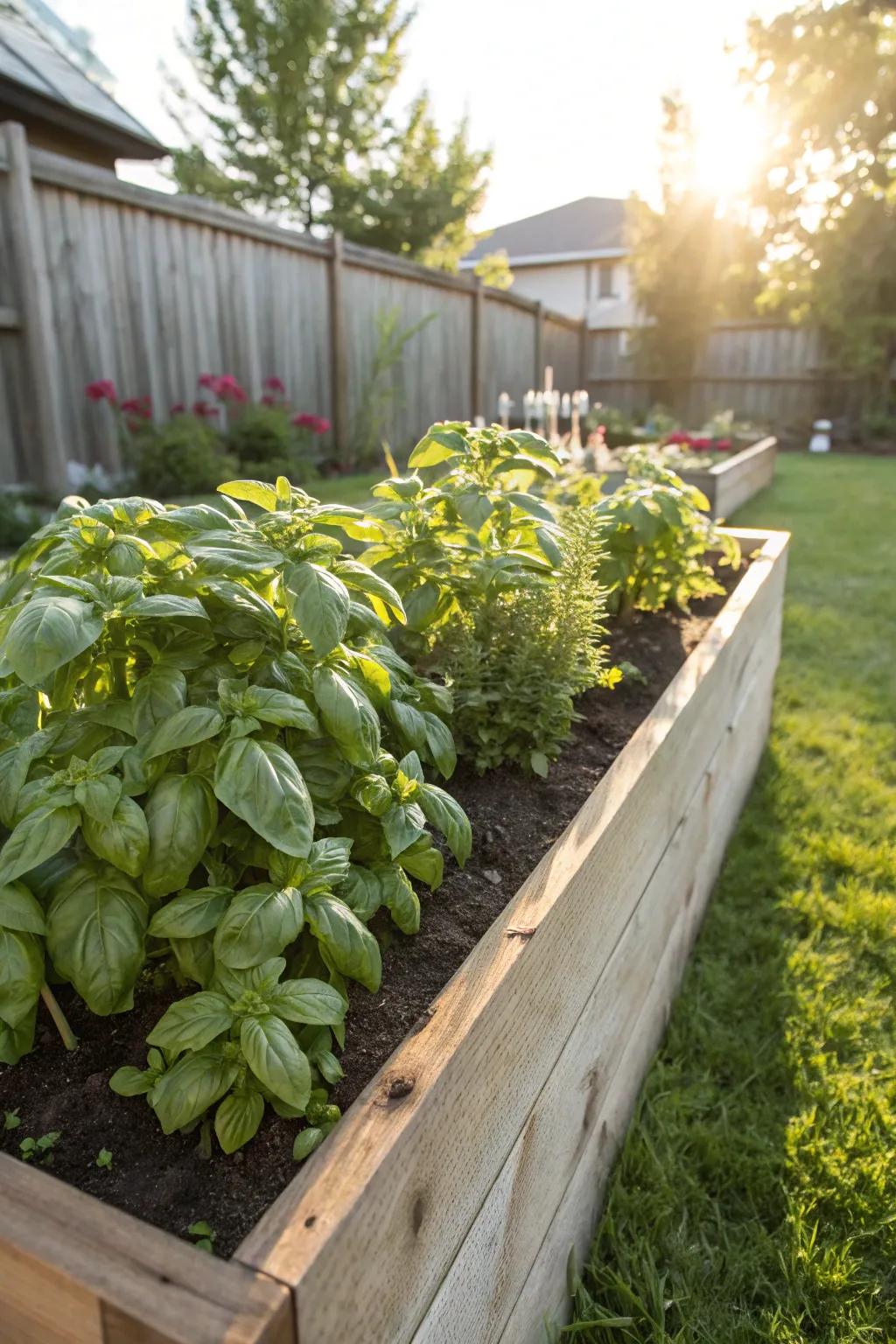
Basil loves the quick-draining soil of a raised bed, making it a star herb for your garden. I love planting it along the edges where it can soak up the sun and add a fragrant touch.
A few suggestions:
- Raised Garden Bed Kit: Upgrade your garden with this kit, ensuring optimal drainage and healthy basil growth.
- Organic Basil Seeds: Plant organic basil seeds for a fresh, fragrant touch in your raised garden bed.
- Garden Soil Mix: Enhance basil growth with this nutrient-rich soil mix for vibrant, healthy plants.
10. Herb Haven
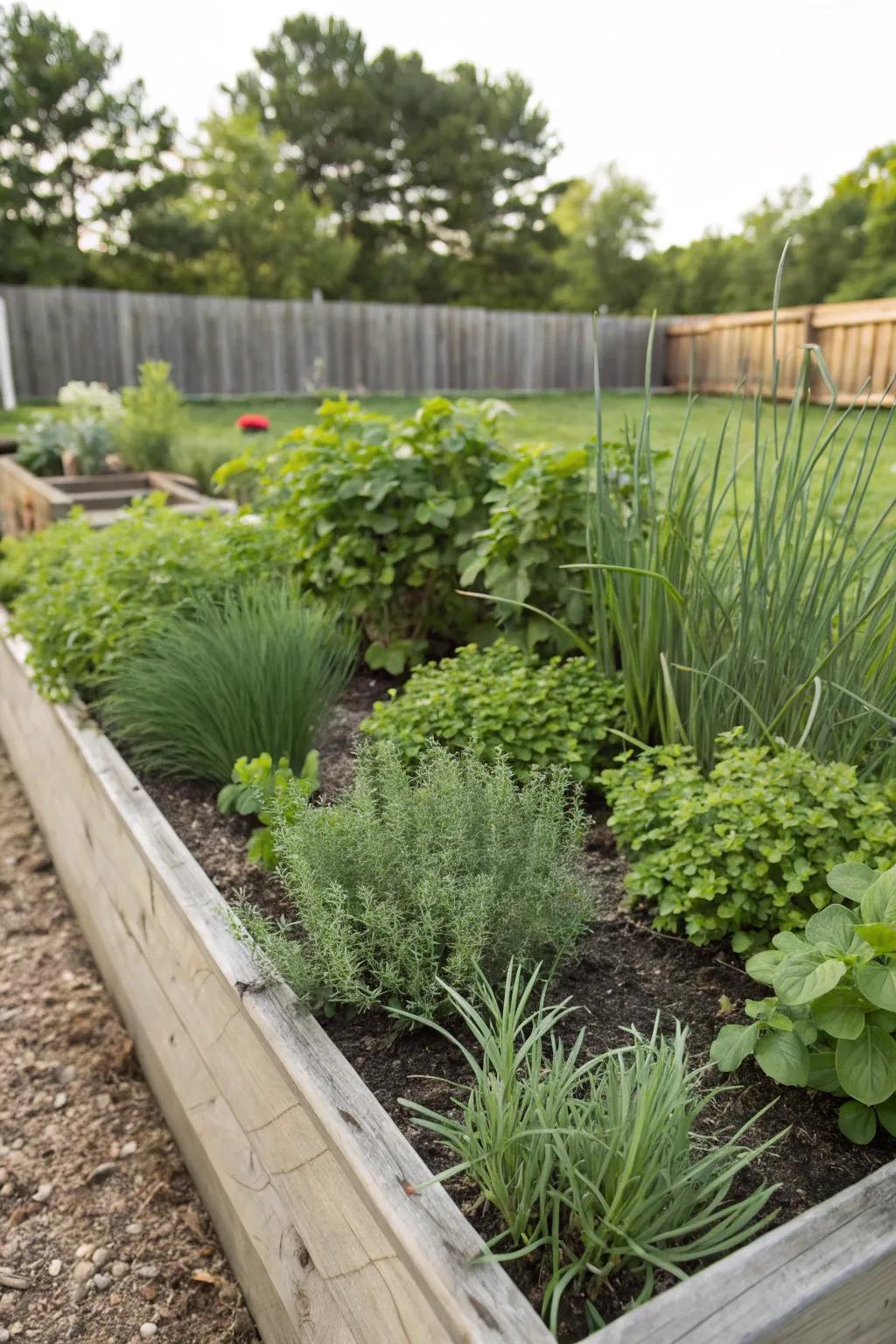
Create a mini herb garden with chives, oregano, and rosemary, all of which thrive in raised beds. I love using fresh herbs to elevate my cooking.
Might be a good match:
- Raised Garden Bed Kit: Elevate your herb gardening with an easy-to-assemble raised bed kit for optimal growth.
- Herb Garden Starter Kit: Start your herb garden effortlessly with a complete starter kit including seeds and essentials.
- Organic Potting Soil Mix: Boost your herb growth with nutrient-rich organic potting soil designed for raised beds.
11. Pepper Power

Whether sweet or spicy, peppers flourish in the warm, well-drained soil of a raised bed. I find their vibrant colors and flavors a delightful addition to my garden.
Products that could assist:
- Raised Garden Bed Kit: Elevate your gardening with a durable raised bed kit for optimal pepper growth and harvest.
- Organic Vegetable Fertilizer: Boost your pepper plants’ health with organic fertilizer, ensuring vibrant colors and rich flavors.
- Drip Irrigation System: Effortlessly water your pepper garden with a reliable drip irrigation system for consistent growth.
12. Tomato Towers
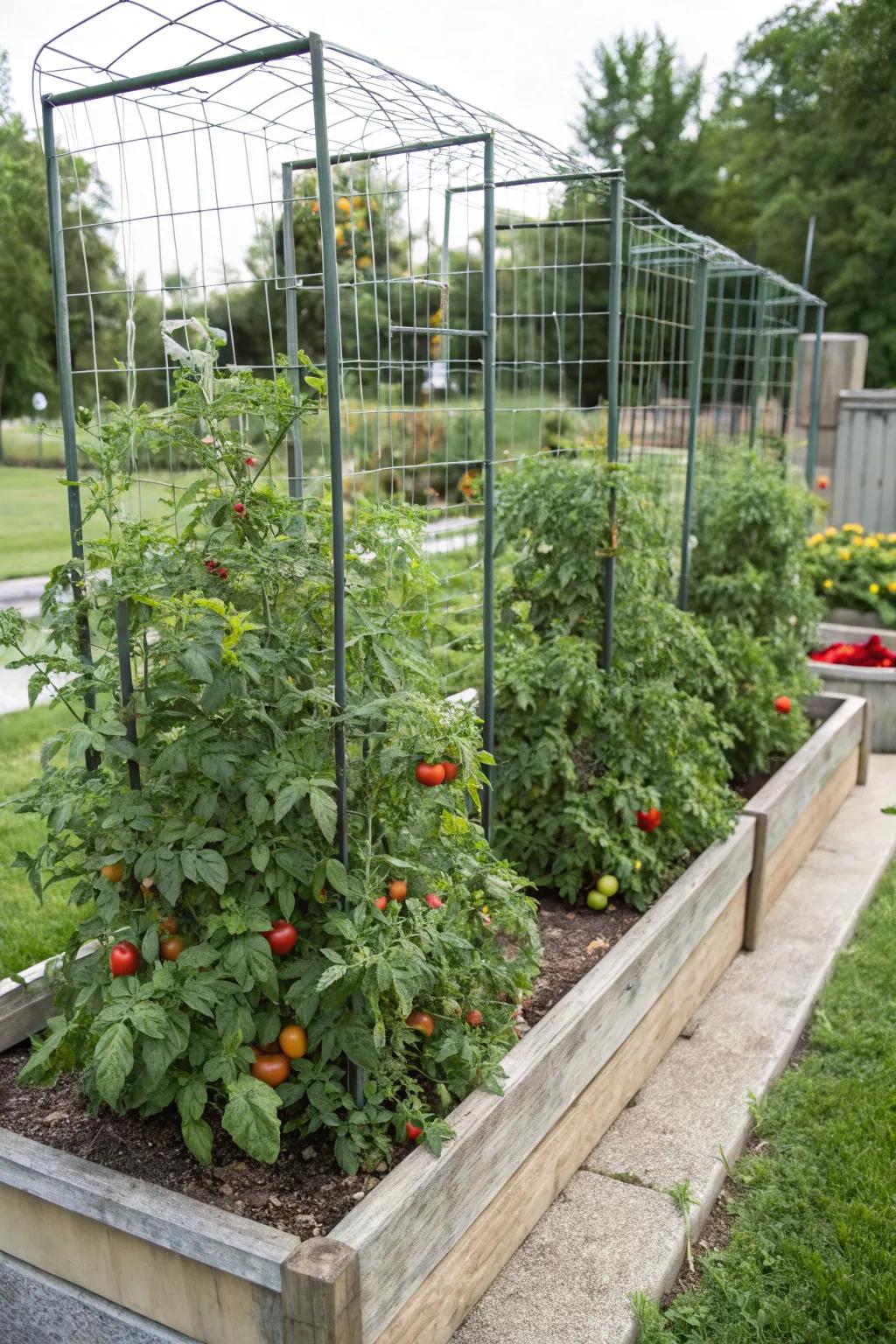
Tomatoes are a must-have in any raised bed, especially since they love the warmth and rich soil. I plant both determinate and indeterminate varieties, using sturdy cages to support their growth.
A few choices to try:
- Sturdy Tomato Cages: Ensure robust growth for your tomatoes with durable cages that support vertical growth easily.
- Heavy-Duty Garden Trellis: Boost your tomato yield with a reliable trellis that maximizes exposure and space utilization.
- Organic Tomato Fertilizer: Nourish your tomato plants naturally with organic fertilizer that enriches soil and boosts health.
13. Lettuce Layers
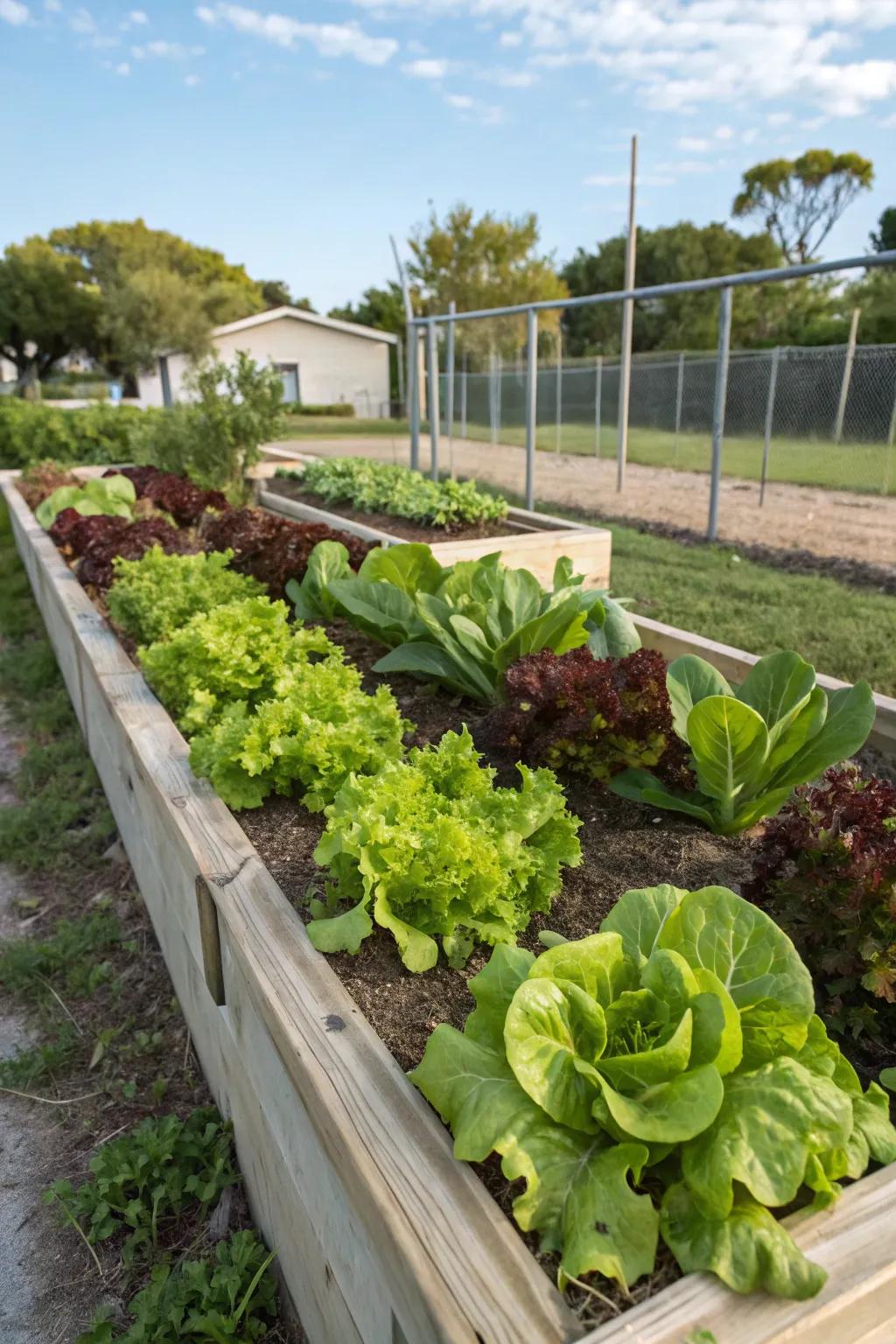
Lettuce grows quickly and abundantly in a raised bed, making it a salad-lover’s dream. I like to plant different varieties for a mix of textures and flavors.
Check if these fit your needs:
- Raised Garden Bed Kit: Build your perfect lettuce garden with a durable and easy-to-assemble raised bed kit.
- Lettuce Seed Variety Pack: Experiment with different lettuce varieties to enhance your salad with diverse textures and flavors.
- Organic Vegetable Fertilizer: Boost your lettuce growth with nutrient-rich, organic fertilizer designed for raised beds.
14. Beet Bonanza
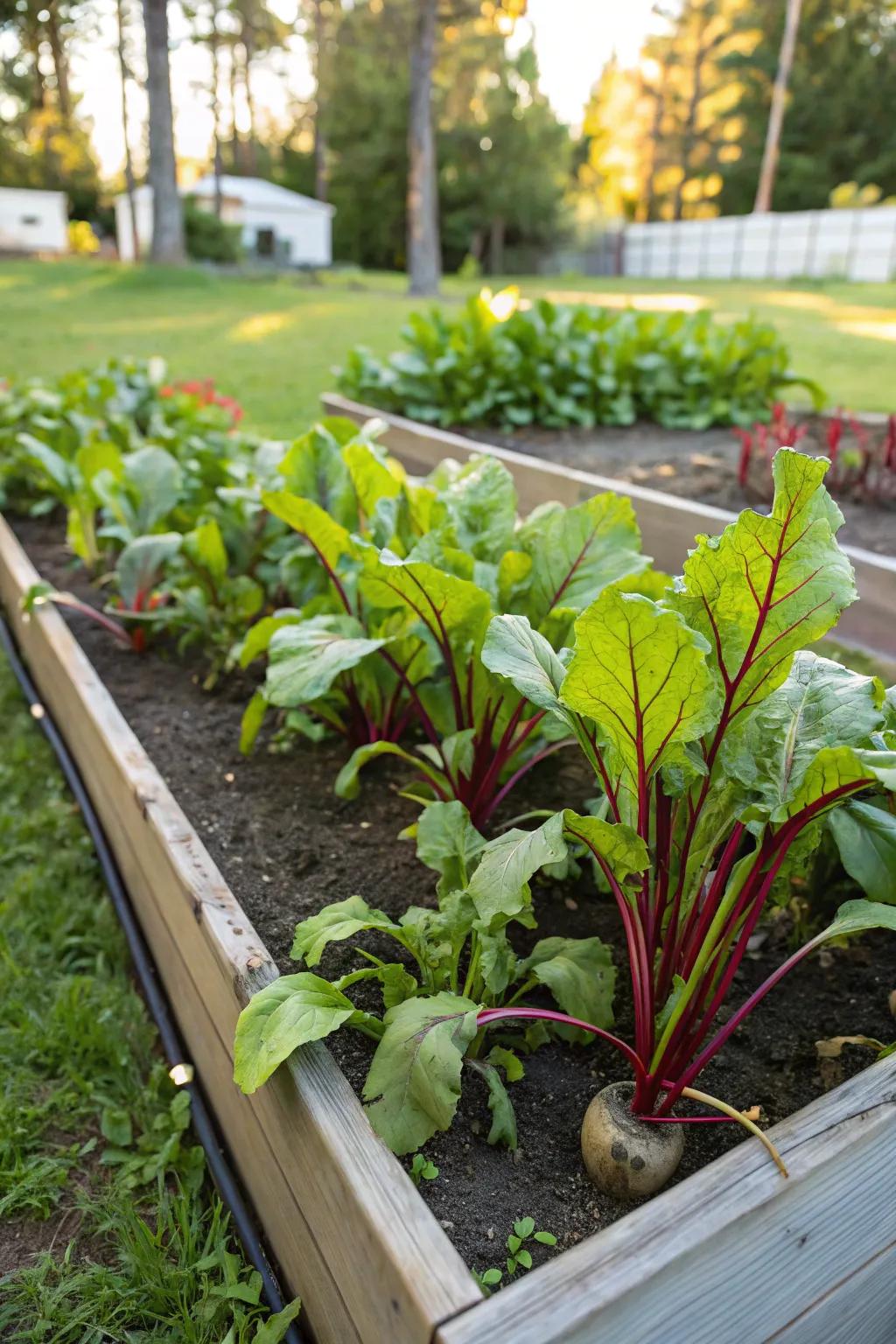
Beets are a fantastic root crop for raised beds, as they love the loose, nutrient-rich soil. I enjoy both their earthy roots and tender greens.
Possibly handy products:
- Organic Beet Seeds: Sow organic beet seeds for vibrant roots and greens in your raised garden bed.
- High-Quality Garden Soil Mix: Enhance your beets’ growth with nutrient-rich, well-draining garden soil mix. Get started today!
- Garden Hoops for Raised Beds: Protect your beets from pests and weather with durable garden hoops. Ensure a bountiful harvest!
15. Radish Rockets
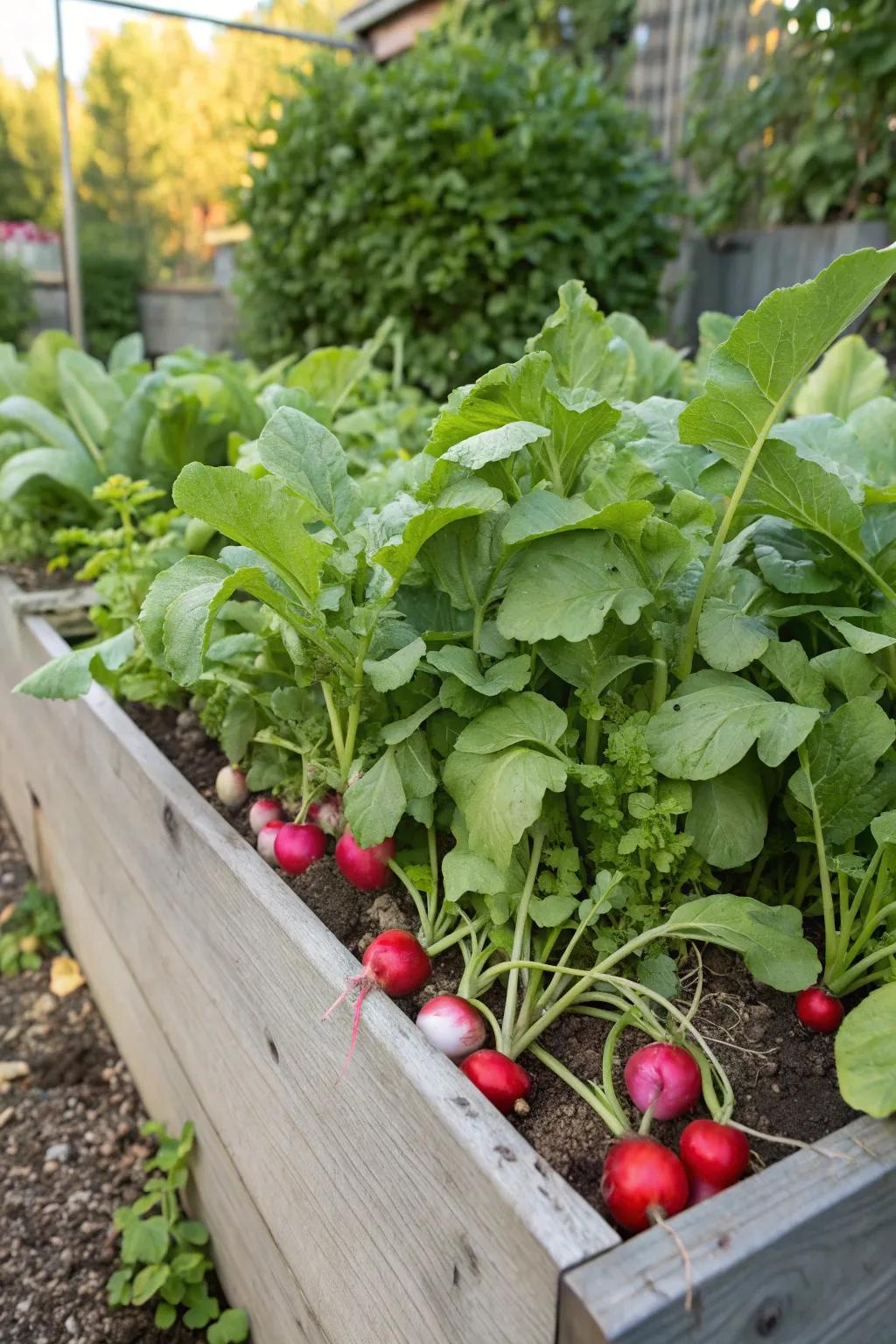
Radishes are one of the quickest-growing crops, perfect for the impatient gardener. I plant them in early spring and enjoy their peppery crunch in no time.
A few things you might like:
- Raised Garden Bed Kit: Create a lush environment for your radishes with this easy-to-assemble raised garden bed kit.
- Organic Radish Seeds Pack: Kickstart your gardening journey with these high-quality organic radish seeds for fast harvests.
- Garden Hoe and Rake Tool Set: Efficiently tend to your plants using this practical hoe and rake tool set, ideal for raised beds.
16. Marigold Magic
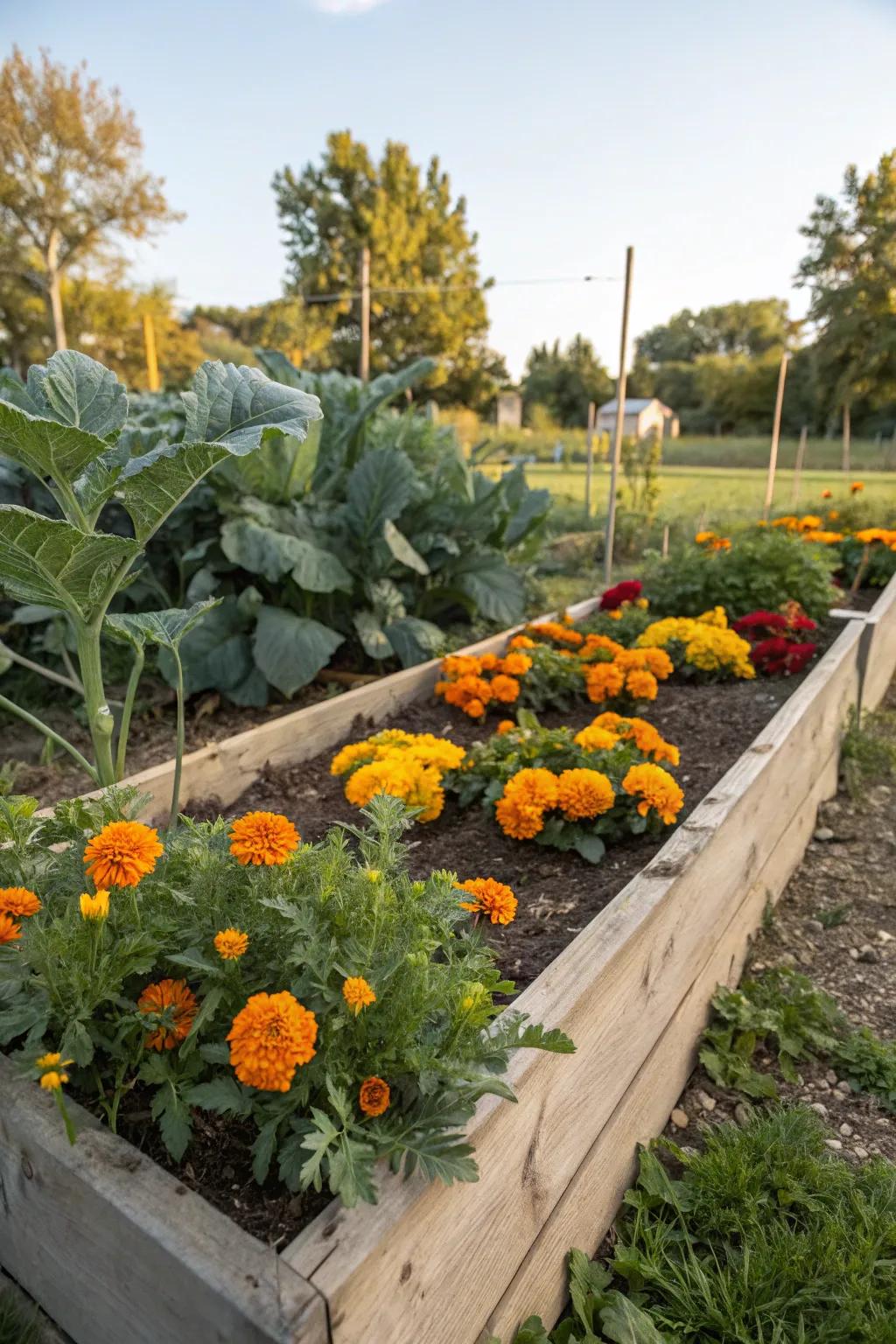
Marigolds are not only beautiful but also great at deterring pests, making them a protective addition. I plant them at the borders of my raised beds for a splash of sunshine.
Maybe worth checking out:
- Pack of Marigold Seeds: Enhance your garden’s beauty and pest protection. Plant marigold seeds along your raised beds.
- Raised Garden Bed Kit: Easily assemble this durable raised bed for a perfect marigold border display in your garden.
- Organic Fertilizer for Flowers: Boost your marigold’s growth with this nutrient-rich organic fertilizer tailored for vibrant flowers.
